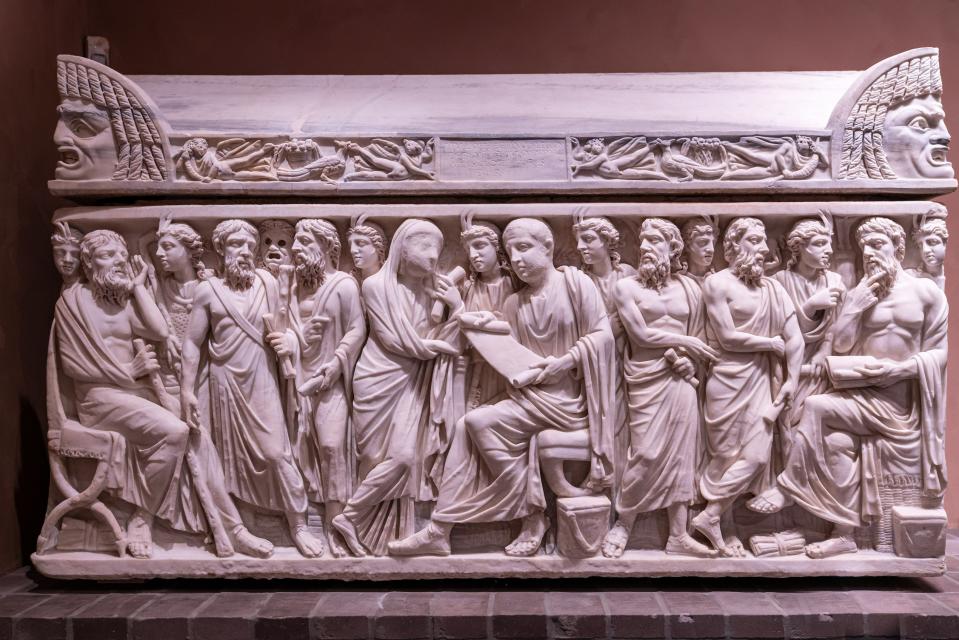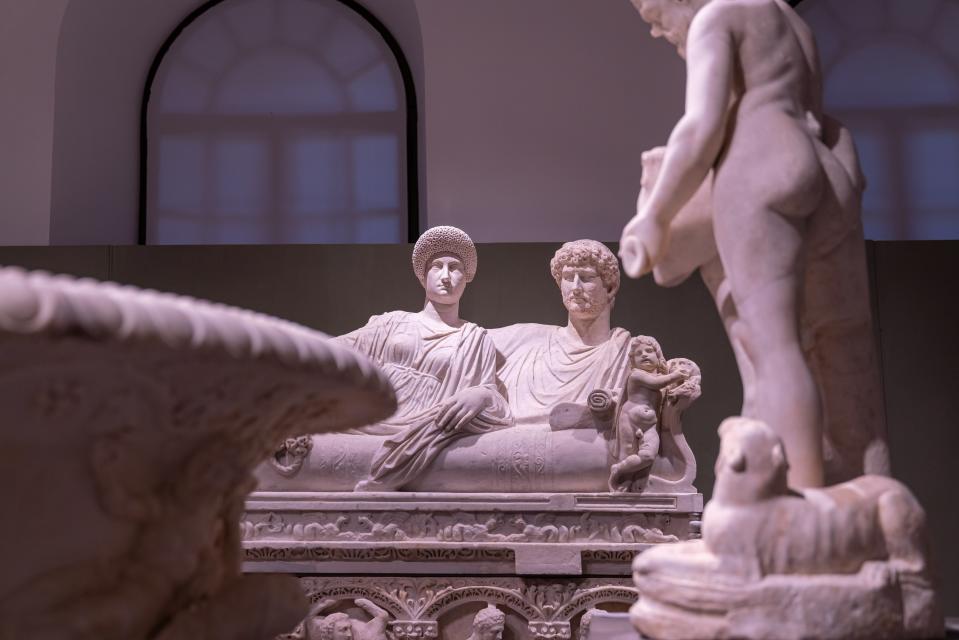Bulgari Continues Its Epic Roman Patronage With the Priceless “Torlonia Marbles”
- Oops!Something went wrong.Please try again later.
When the Museo Torlonia closed in 1976—a century after it first opened—the aristocratic Torlonia family’s incredible collection of ancient Greek and Roman art was put in storage in one of the family’s villas. That was the last time the works of priceless art were on view in a museum, and not a very accessible one at that (in the post-war period admission was only rarely granted to experts or visiting dignitaries). Now, thanks to financial support by Bulgari, the collection is on view once again in the “Torlonia Marbles” exhibition that just opened at Rome’s Musei Capitolini.
Considered one of the world’s most important private collections of Greco-Roman art and rivaling the collection of the Vatican Museums, the marble sculptures, busts, reliefs, vases, and sarcophagi are setting out in the first phase of a grand tour of the world’s museums. Of the more than 600 artworks owned by the Torlonia family, 92 have been restored to their original splendor.

The Torlonia family became fabulously wealthy during the 18th and 19th centuries by administering the finances of the Vatican and bought entire collections of ancient art from other noble families in dire financial straits. They also added pieces excavated on the sites of their villas in Rome and the surrounding area. That’s why the Fondazione Torlonia established by Prince Alessandro Torlonia to protect the works describes it as a “collection of collections.” Among the remarkable pieces is a marble goat restored by the Baroque master Gian Lorenzo Bernini and a marble relief depicting a naval scene that still has traces of its original coloring—proof that ancient sculptures and reliefs were not white as we see them now, but painted.
The exhibition curated by Salvatore Settis and Carlo Gasparri opened on October 14 at Villa Caffarelli within the Musei Capitolini, which has been restored for the occasion, and was designed by the Milan office of David Chipperfield.
“It has been an extraordinary experience for myself and the design team at David Chipperfield Architects Milan to work in close collaboration with Fondazione Torlonia, Professor Salvatore Settis and Professor Carlo Gasparri on creating an architectural space for the first public display of the Torlonia Collection,” Chipperfield said. “The staging takes its inspiration from the evolution of the collection with the works organized by acquisition. Each section is characterized by different colors referencing their former display settings, while a system of variable plinths gives expression to the variety and dimension of the sculptures.”

The highly anticipated exhibition has been in the works since 2016, when the heirs of the Torlonia princes and the Fondazione Torlonia signed an accord with the Italian government agreeing to display the works. But it might not have happened without the financial backing of Bulgari.
“It is with great pride and delight that Bulgari has contributed as a sponsor to the restoration of the over 90 ancient sculptures on display, a priceless treasure that is finally being revealed to the general public,” Bulgari CEO Jean-Christophe Babin said.
Established in Rome in 1884 by Greek silversmith Sotirio Bulgari, the company is an important patron of Italy’s cultural heritage, having financed the restoration of the Spanish Steps and the Baths of Caracalla in Rome. It has pledged a million euros to make the archeological site at Largo Argentina—where Julius Caesar was murdered—accessible to the public and is financing the relighting of the Ara Pacis, an ancient monument to August Caesar’s victory over the Gauls, which is located on the square where the Bulgari Hotel will open in 2022.
Originally Appeared on Architectural Digest

